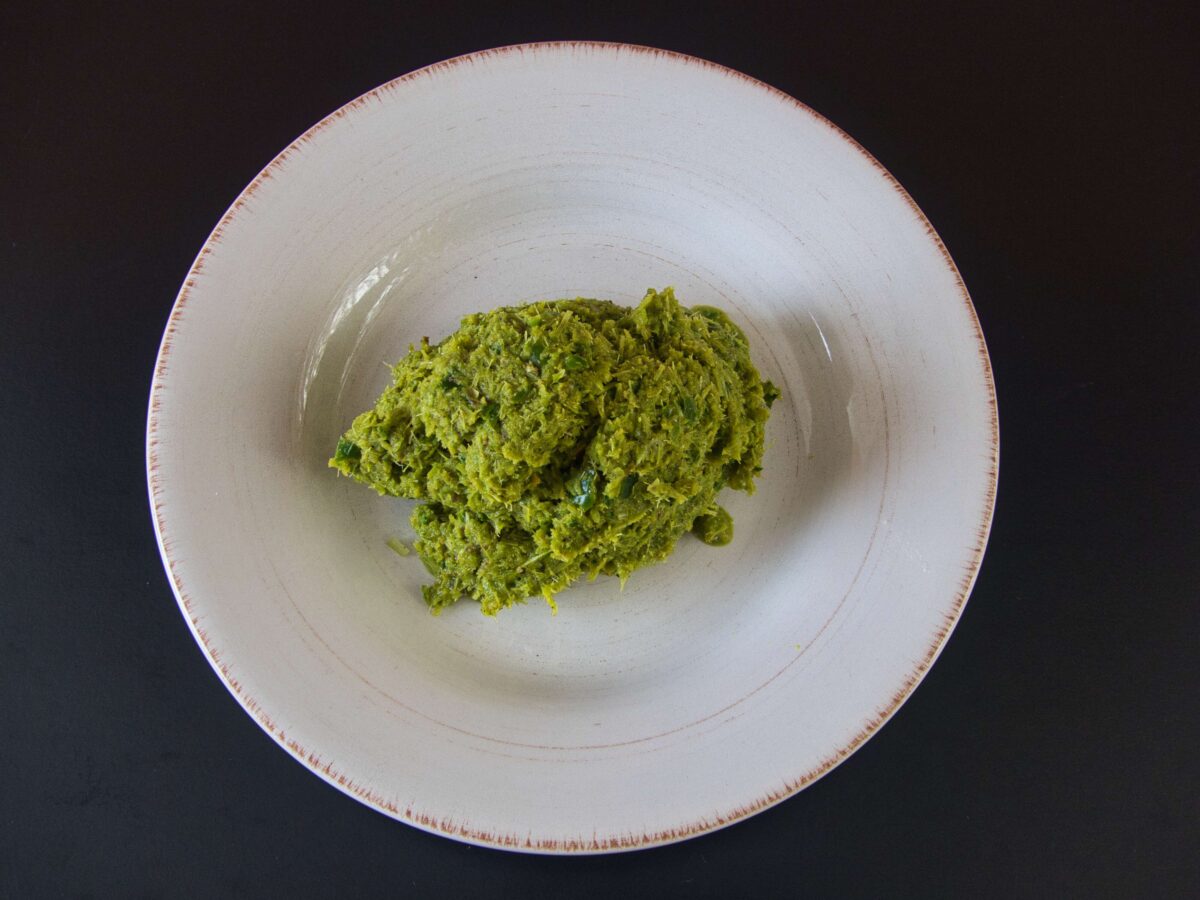
If you’ve ever wandered through a Thai market, you’ve probably seen baskets of freshly made Thai green curry paste in varying shades of vibrant green. While it’s easy to grab a store-bought version, nothing beats the depth of flavor and control you get when making your own. When I opened my wine bar serving Thai food, we crafted our own homemade green curry paste, opting for a coarser texture with less salt and chili than many commercial options. It’s time-consuming but incredibly rewarding—grinding fresh lemongrass, galangal, kaffir lime, and green chilies into a fragrant paste is almost meditative. If you’re serious about authentic Thai cooking, learning to make your own curry paste is a skill worth mastering.
Equipment you will need to make your Thai green curry paste
To make your Thai green curry paste, you’ll need a sturdy chopping board and a sharp knife to prepare the ingredients. A traditional granite mortar and pestle is essential for grinding everything into a fragrant paste. You can easily find these tools at most Asian grocery stores, where they are often sold as part of Thai cooking essentials.
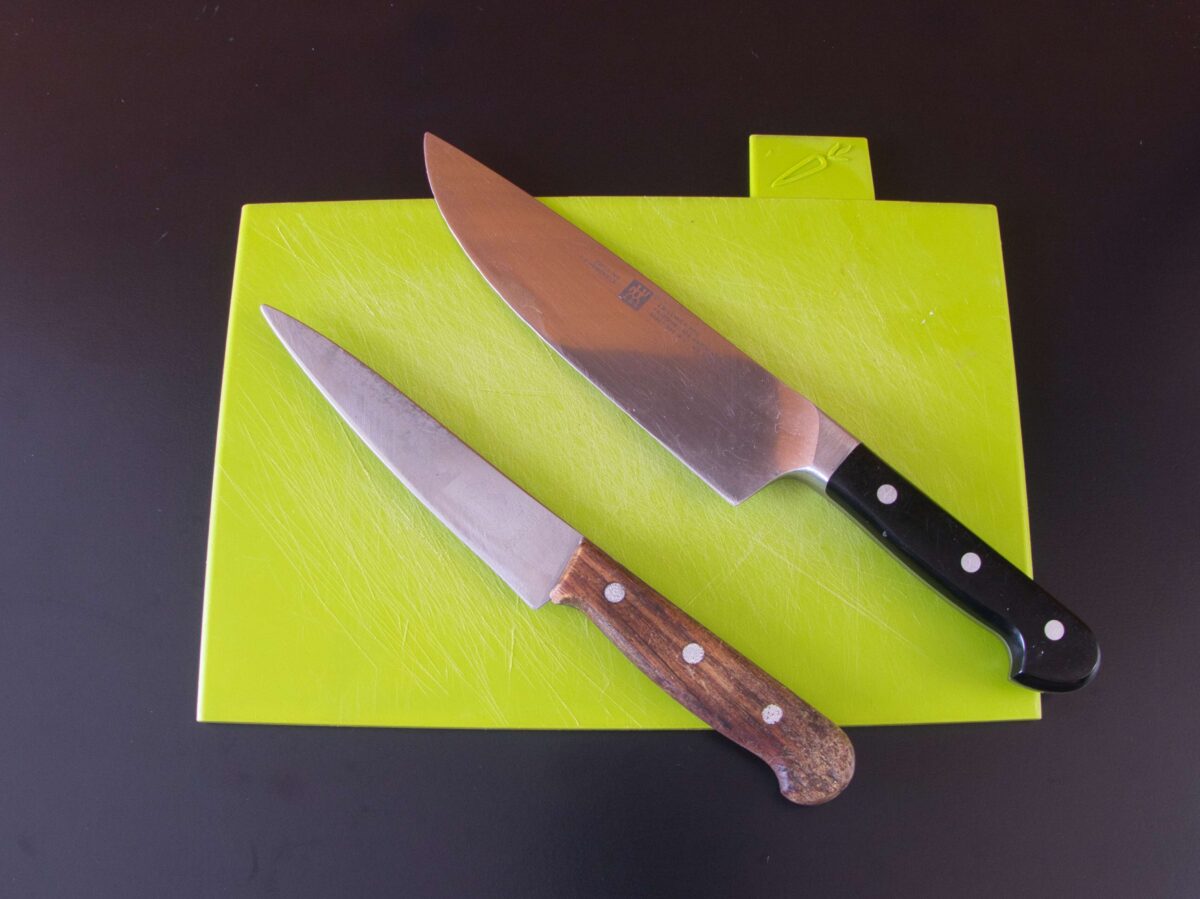
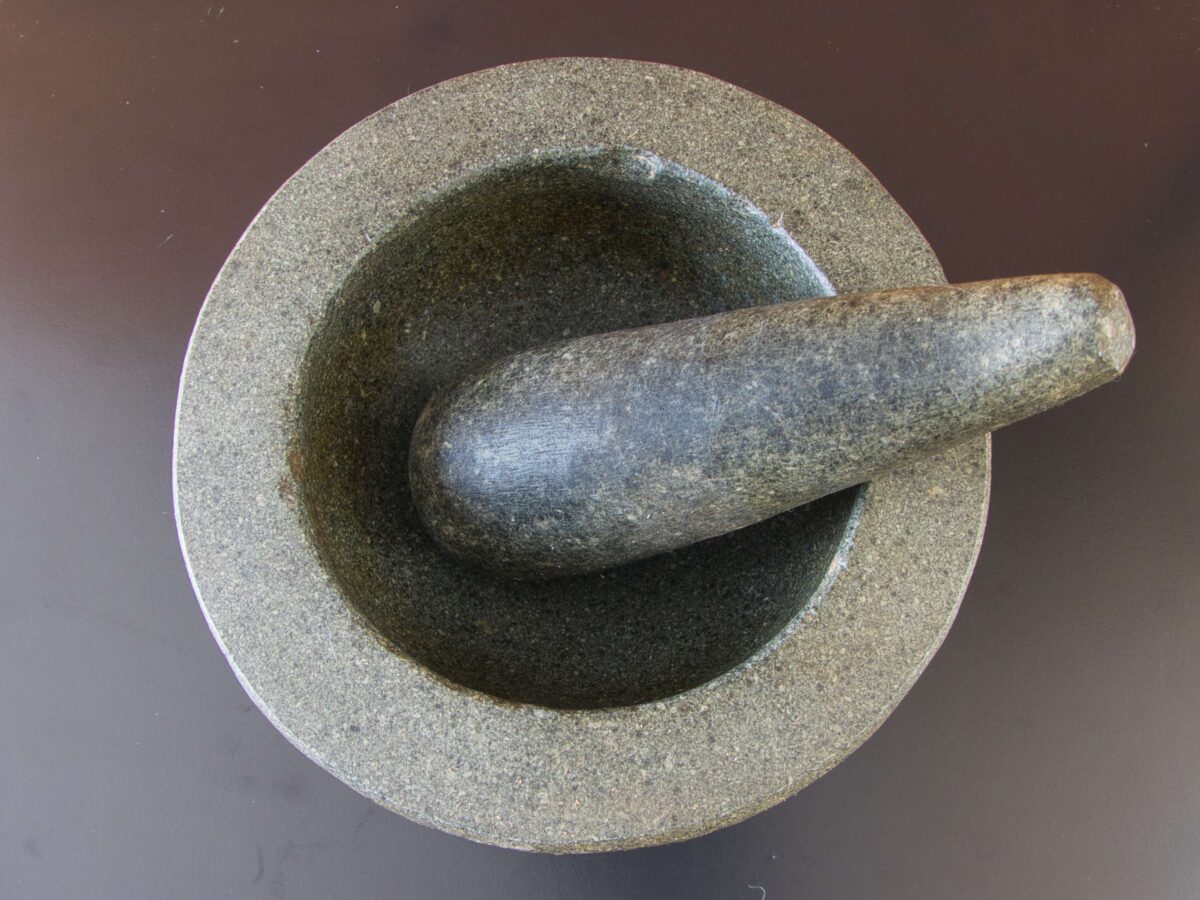
Ingredients needed to make your Thai green curry paste

clockwise from top left
Hot Thai green chilies – Provides heat and vibrant green color. Adjust quantity based on spice preference.
Large long green chilies – Milder than Thai chilies, they add depth of flavor and a fresh, slightly sweet heat.
Galangal – A key Thai ingredient with a citrusy, pine-like aroma. Substitute with ginger if unavailable, though the flavor differs.
Lemongrass – Adds bright, citrusy notes. Use the tender white part, finely sliced before grinding.
Kaffir lime leaves – Finely chopped or pounded, they give a fragrant, slightly bitter citrus aroma. Coriander roots – Packed with earthy, peppery flavors. If unavailable, use coriander stems.
Turmeric – Brings a warm, earthy depth and enhances the paste’s color.
Ginger – Complements galangal with a milder, slightly sweeter heat.
Red onion or shallot – Adds mild sweetness and balance to the spice. Shallots are more traditional, but red onion works well.
Garlic – Essential for depth of flavor and aroma.
White peppercorns – Provides subtle heat and a slightly floral note, distinct from black pepper. Coriander seeds – Adds warmth and a nutty, citrusy flavor. Toast lightly for extra depth.
Salt – Enhances flavors and acts as a natural preservative.
Shrimp paste – A small but powerful addition for umami richness. Omit for a vegetarian version.
Mace – The outer covering of nutmeg, lending a warm, slightly sweet, and aromatic depth.
How to make your Thai green curry paste
- Prepare the Ingredients
Peel and chop galangal, turmeric, and ginger into small pieces.
Remove the outer layers of the lemongrass, then finely slice the tender inner stalk.
Lightly toast the coriander seeds in a dry pan until aromatic, then let them cool. - Grind the Dry Ingredients
First using a mortar and pestle, start by grinding the white peppercorns, coriander seeds, and salt into a fine powder. - Add Aromatic Ingredients
Add the garlic, shallots, lemongrass, galangal, turmeric, and ginger.
Pound until a coarse paste starts forming. - Incorporate the Chilies & Herbs
Add the green chilies, coriander roots, and kaffir lime leaves.
Continue pounding until smooth. This process takes 10–15 minutes with a mortar and pestle but develops a richer flavor. - Mix in the Final Ingredients
Add the shrimp paste and mace, blending them evenly into the paste. - Store or Use Immediately
Use the paste fresh, or store it in an airtight container in the fridge for up to a week.
For longer storage, freeze in small portions for up to 3 months.
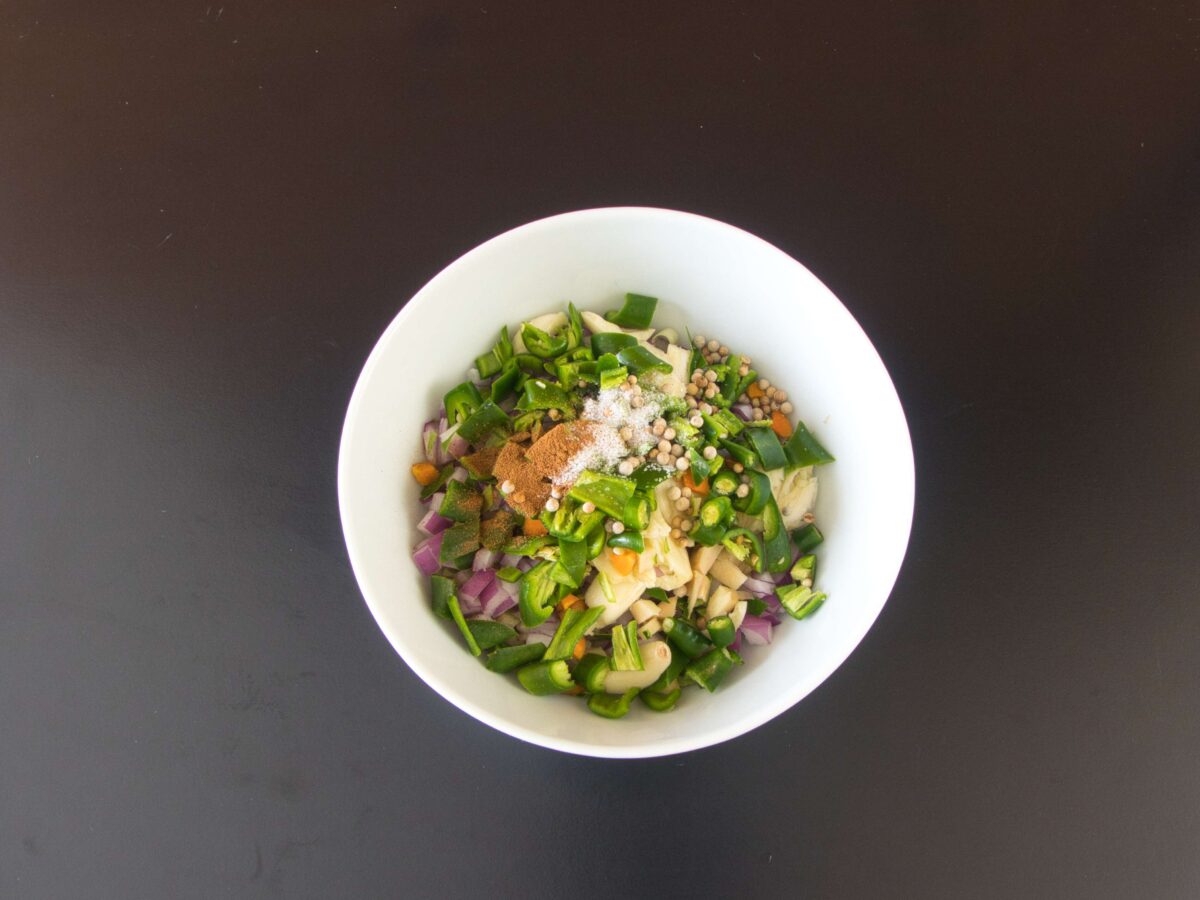
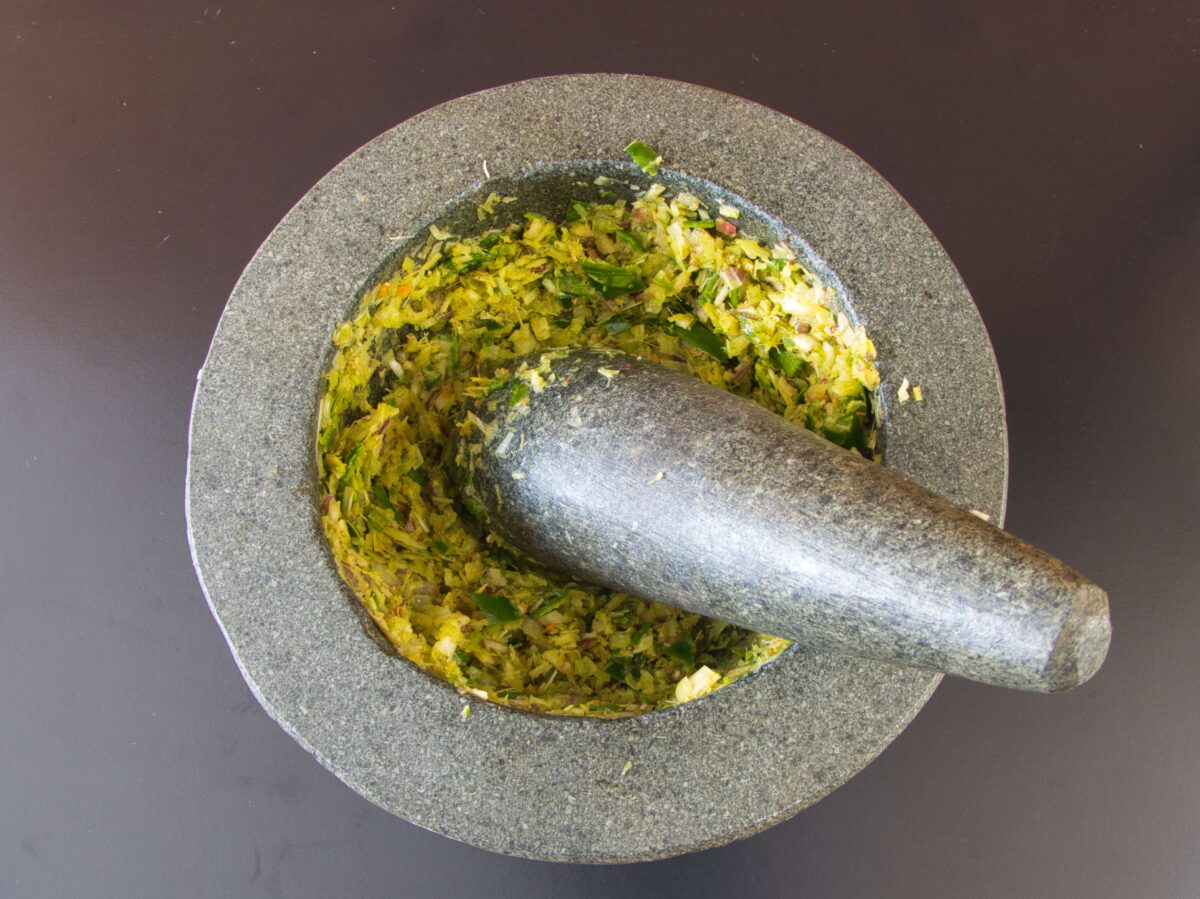

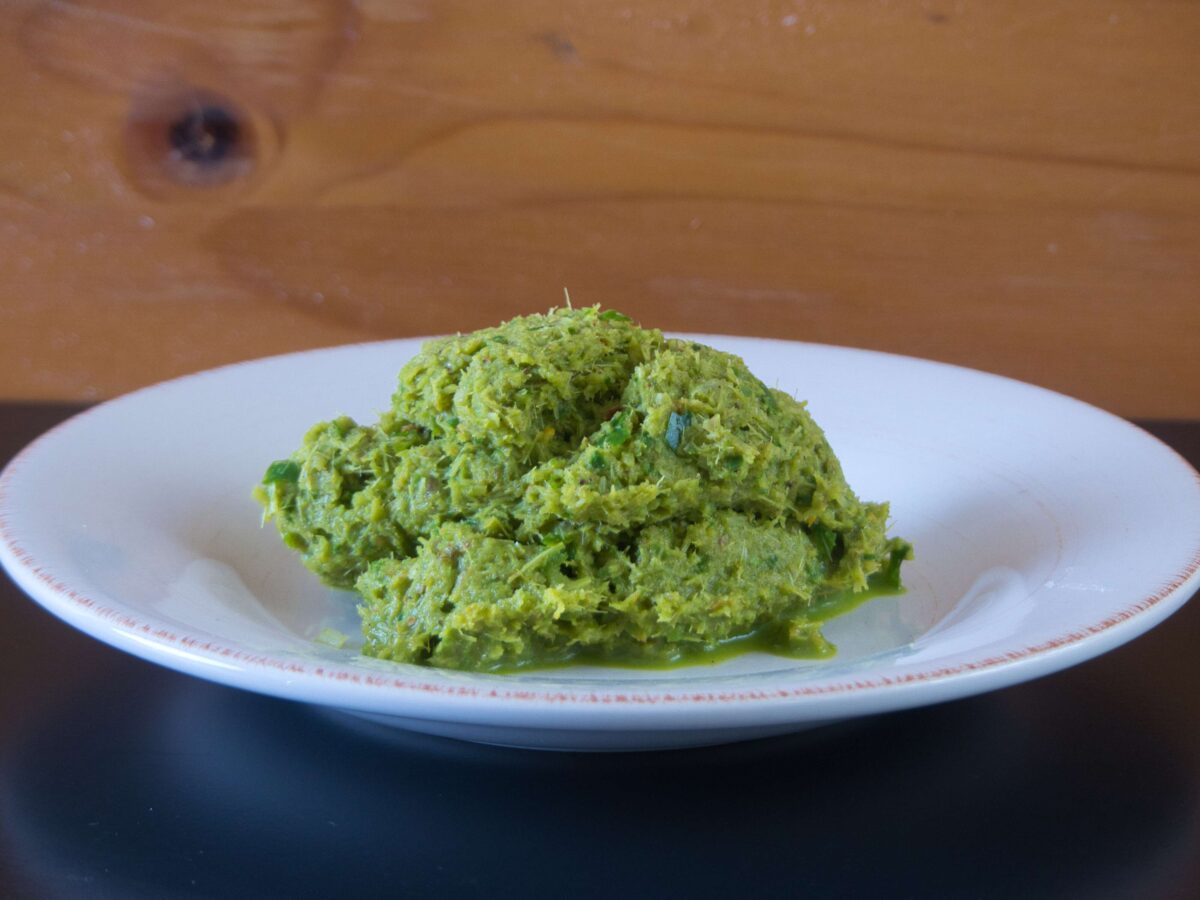
Thai green curry paste
Equipment
- 1 chopping board
- 1 Sharp knife
- 1 granite mortar and pestle
Ingredients
- 3 g hot green chilli
- 30 g long green chilli
- 20 g galangal
- 60 g lemongrass
- 2 g kaffir lime leaf
- 10 g coriander root
- 3 g fresh tumeric
- 3 g ginger
- 50 g red shallot or red onion
- 25 g garlic
- 1 g white peppercorns
- 1 g coriander seeds
- 2 g salt
- 5 g shrimp paste
- 0.5 g mace
Instructions
- Peel and chop galangal, turmeric, and ginger into small pieces.
- Remove the outer layers of the lemongrass, then finely slice the tender inner stalk.
- Lightly toast the coriander seeds in a dry pan until aromatic, then let them cool.
- Add the garlic, shallots, lemongrass, galangal, turmeric, and ginger.Pound until a coarse paste starts forming.
- Add the green chilies, coriander roots, and kaffir lime leaves.Continue pounding until smooth. This process takes 10–15 minutes with a mortar and pestle but develops a richer flavor.
- Add the shrimp paste and mace, blending them evenly into the paste.
- Use the paste fresh, or store it in an airtight container in the fridge for up to a week.For longer storage, freeze in small portions for up to 3 months.
Notes
Blender/food processor: It is Faster but may need water or oil to help blend, resulting in a smoother paste. Blenders tend to cut the ingredients finely. When grinding in the mortar breaks down the texture and structure of the ingredients, releasing more flavour Order Matters – Start by grinding dry spices first, then add harder ingredients like galangal and lemongrass, finishing with softer ones like chilies and shallots. Adjust the Spice Level – Use more or fewer green chilies depending on your heat preference. Removing the seeds reduces spiciness. Salt Control – Store-bought curry pastes often have more salt. Making your own allows you to season the final dish more accurately. Shrimp Paste for Umami – Traditionally added for depth, but you can omit it for a vegetarian version. Storage & Shelf Life – Keep in an airtight container in the fridge for up to 1 week.
Freeze in small portions (ice cube tray method) for up to 3 months.
Nutrition
Notes and tips when making authentic Thai green curry paste
Use Fresh Ingredients – The key to a fragrant curry paste is using fresh galangal, lemongrass, and kaffir lime leaves. Dried versions won’t give the same depth of flavor.
Toast the Spices – Lightly toasting coriander seeds and white peppercorns in a dry pan enhances their aroma before grinding.
Mortar & Pestle vs. Blender –Traditional method (mortar & pestle): This gives a coarser texture but better flavor extraction.Blender/food processor: It is Faster but may need water or oil to help blend, resulting in a smoother paste. Blenders tend to cut the ingredients finely. When grinding in the mortar breaks down the texture and structure of the ingredients, releasing more flavour.
Order Matters – Start by grinding dry spices first, then add harder ingredients like galangal and lemongrass, finishing with softer ones like chilies and shallots.
Adjust the Spice Level – Use more or fewer green chilies depending on your heat preference. Removing the seeds reduces spiciness.
Salt Control – Store-bought curry pastes often have more salt. Making your own allows you to season the final dish more accurately.
Shrimp Paste for Umami – Traditionally added for depth, but you can omit it for a vegetarian version.
Storage & Shelf Life –Keep in an airtight container in the fridge for up to 1 week. Freeze in small portions (ice cube tray method) for up to 3 months.I vacuum pack my curry paste, which extends its shelf life in the refrigerator for many months.
We’d love to see your creations! Share your photos and tag us on social media
Looking for more tasty Thai recipes? Try these next
Love Thai food? Get more delicious recipes straight to your inbox! Subscribe to our email list for exclusive recipes, cooking tips, and kitchen hacks. Sign up below.

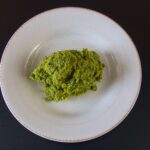
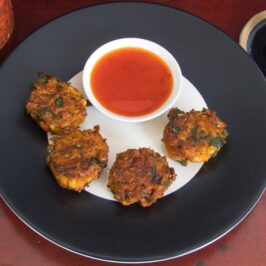
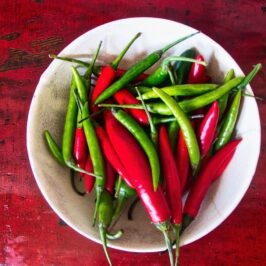

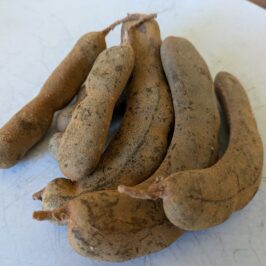
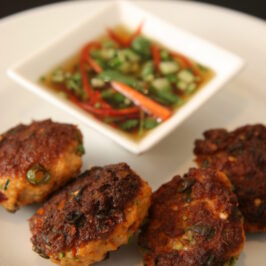

Leave a Reply